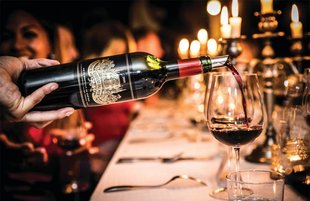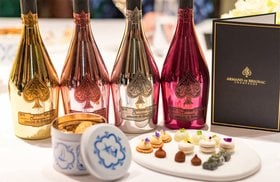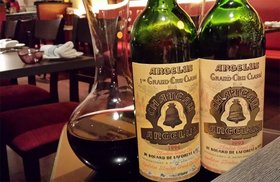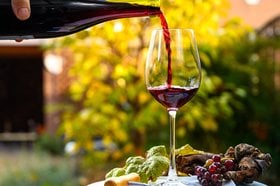5 Popular Types of Wine in 2025 (Flavors, Food Pairings & Top Picks)
With a zillion types of wines as varied as Bordeaux blends, Cabernet Sauvignons, Pinot Noirs, and more, you may easily get confused about which ones to buy for your collection.
This article explores the five main types of wine - red, white, rose, sparkling, and dessert wine. You’ll discover everything you need to know about them — from their taste and aging potential to the best food pairings.
Additionally, we’ll walk you through the top wine recommendations (for drinking and investing), and a hassle-free way to invest in fine wines.
Further reading
- Tap into the world of Fine Wine Investment with this detailed guide.
- Discover 23 Popular Red and White Wine Grape Varieties, including the best bottle recommendations.
This Article Contains
- Red Wine (Characteristics, Food Pairings, Wine Recommendations)
- White Wine (Characteristics, Food Pairings, Wine Recommendations)
- Rose Wine (Characteristics, Food Pairings, Wine Recommendations)
- Sparkling Wine (Characteristics, Food Pairings, Wine Recommendations)
- Dessert Wine (Characteristics, Food Pairings, Wine Recommendations)
- From Drinking to Investing: The Hidden Value Behind Fine Wine
- Discover, Savor, and Even Invest in Wine (Because, Why Not?)
The 5 Different Types of Wine
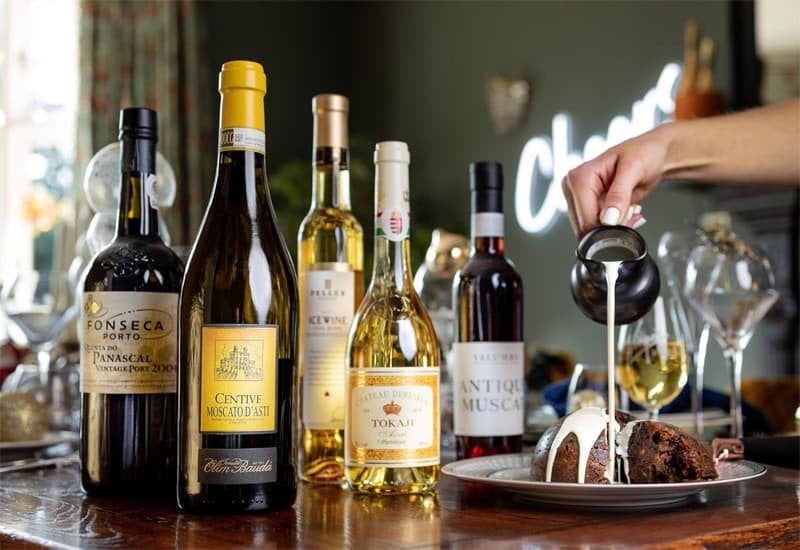
The unique characteristics of a wine variety are determined by various factors like the terroir, grape varieties used, climatic variations, and winemaking techniques.
Wines made from different grape varietals have varying characteristics like tannins (phenolic compounds) and acidity levels, which affect their taste.
Based on the above factors, we can broadly divide wine into five main categories:
- Red Wine
- White Wine
- Rose Wine
- Sparkling Wine
- Dessert Wine
Ready to discover which wine suits your style?
1. Red Wine (Characteristics, Food Pairings, Wine Recommendations)
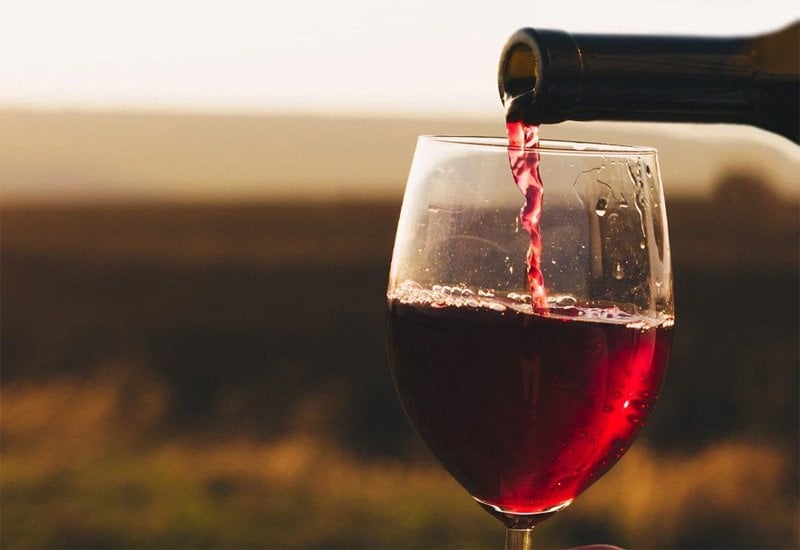
With dark, brooding flavors and beautiful ruby-garnet colors, red wine makes the perfect wine gift for an oenophile.
What Is Red Wine?
Simply put, red wine is wine made from dark-skinned grape varieties. The wine grapes are fermented along with their skins to give the wine unique color, flavors, acidity, and tannin levels.
Red Wine Characteristics And Food Pairings
Here are some common characteristics of red wine:
- Color: A red wine can vary from opaque purple to deep garnet and soft ruby color.
- Tannin: Usually has high tannin levels, which gives it a dry sensation on the palate
- Acidity: Red wines are slightly acidic with a refreshing mouthfeel.
- Taste: Red wines have dominant fruit flavors, including red and black fruit. Oak barrel aging gives them cedar, chocolate, and coffee notes.
Old World red wines (from regions like France and Italy) display more terroir-specific notes (like earthy aromas of soil and wet leaves.) The New World wines (from the USA, New Zealand, Australia) are fruitier with subtle earthy nuances. - Varietals: Can be grape varietal wines (made from a single grape variety like Cabernet Franc, Petite Sirah, and Cabernet Sauvignon) or a wine blend. Some famous red blend wines are the red Bordeaux blends, Port wines, and the red Rhone wines. The famous Italian Super Tuscan wines are also blends of Merlot, Cabernet Sauvignon, Syrah and more.
In New World wine regions, the wines are labeled by their grape variety. In Old World regions, the labels mention the wine region (for example, Burgundy, Chianti, or Beaujolais). - Food Pairing: Red meat dishes like steak, veal, and game go well with red wine.
- Serving Instruction: The ideal serving temperature for most red wines is between 55-65°F (13-18°C).
Popular Red Wines by Grape Varietal

The easiest way to understand the types of red wine is through the grape varietals.
1. Cabernet Sauvignon
The Cabernet Sauvignon wine varietal is an offspring of the ancient red wine grape, Cabernet Franc. Wine drinkers admire Cabernet Sauvignon red wine for its ‘green bell pepper’ notes and complex aromas.
It is grown in almost all major wine regions of the world.
The wine made from this red grape has blackberry, blackcurrant, blueberry notes, and creme de cassis fruit flavors with hints of chocolate, tobacco, cedar, and mint.
These wines can age for a minimum of 7-10 years and can go up to two decades.
Cabernet Sauvignon and other full-bodied reds (like Cabernet Franc) are best served in tall and broad-bowled red wine glasses.
Our favorite Cabernet Sauvignon wines are:
- 2013 Ghost Horse Vineyard 'Spectre' Cabernet Sauvignon, Napa Valley, USA (Price: $5,000)
- 2017 Screaming Eagle Cabernet Sauvignon, Napa Valley, USA (Price: $3,640)
2. Pinot Noir
Pinot Noir is a red grape that produces light to medium-body dry wine.
A Pinot Noir wine tasting reveals dominant strawberry, cherry, and raspberry flavors. Oak barrel aging gives the wine spicy cinnamon and tobacco notes.
A good Pinot Noir varietal wine can effortlessly age for 10-30 years. It is best served in an aroma collector ‘Bourgogne’ wine glass.
Our favorite wines from the Pinot Noir grape are:
- 2014 Domaine Leroy Musigny Grand Cru, Cote de Nuits, France (Price: $69,000)
- 2015 Domaine de la Romanee-Conti Romanee-Conti Grand Cru,Cote de Nuits, France (Price: $31,634)
3. Merlot
A hardy grape varietal, the Merlot wine grape produces a variety of flavors depending on where it's grown. Cooler climate Merlot wines have fruity raspberry, candied berries, and cherry flavors, while Merlot from a warm wine region has more herbaceous notes.
Merlot is also used as a blending grape (along with Cabernet Sauvignon, Cabernet Franc, Petit Verdot, and Malbec) in the red Bordeaux wine blend.
Merlot wines can age from 3 to 15 years.
The best Merlot wines to try are:
- 2015 Le Pin, Pomerol, France (Price: $4,708)
- 2018 Petrus, Pomerol, France (Price: $5,428)
4. Other Red Wines
Other famous red grape varietal styles include Malbec, Cabernet Franc, Petit Sirah, Syrah (Shiraz), Zinfandel, Petit Verdot, Tempranillo, and Grenache.
2. White Wine (Characteristics, Food Pairings, Wine Recommendations)
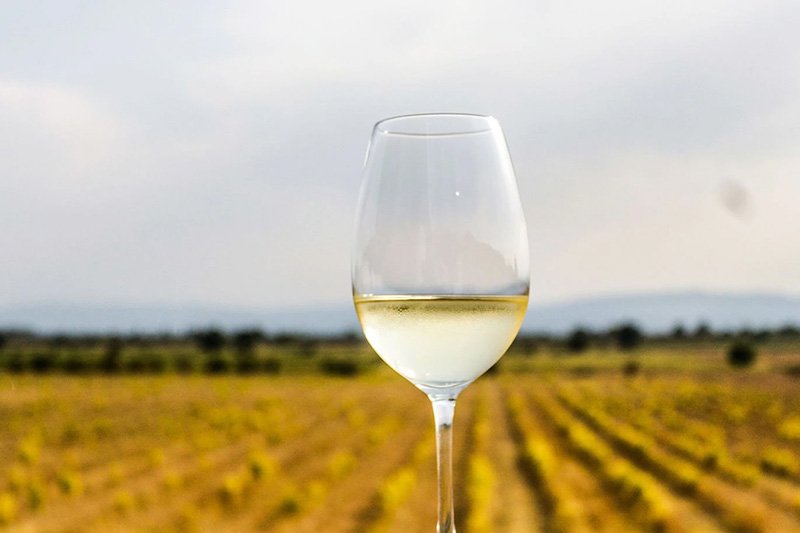
Elegant and seductive, white wines are usually the star of fancy evening soirées.
Here’s everything you need to know about them.
What Is White Wine?
White wine is made by fermenting green-skinned grape varieties. White wines can also be produced from black grapes by simply removing the skins off the grape before fermentation.
White Wine Characteristics And Food Pairings
- Color: Usually clear with a golden-yellow tint
- Tannin: Minimal to no tannins
- Acidity: High acidity with low alcohol content
- Taste: Either dry or sweet with lemon, grapefruit, apple, quince, and peach flavors.
- Varietal: Grape varieties include Chardonnay, Pinot Gris, Sauvignon Blanc, Riesling, Gewurztraminer, Viognier, and Chenin Blanc. Blends are more common in the Bordeaux and Southern Rhone regions of France and some parts of Spain.
- Food Pairing: Seafood dishes like shrimp and crab
- Serving Instruction:Serve white wines at a temperature between 45-60°F (7-13°C).
Popular White Wines By Grape Varietal Wines

Here are some of the best white grape varietal wines:
1. Sauvignon Blanc
Sauvignon Blanc is a green-skinned grape variety that produces dry, crisp, and medium-bodied varietal wine. This dry wine has a citrus fruit flavor of green apples with fresh gooseberry and bell pepper flavors.
Sauvignon Blanc is also used as a blending grape in the white Bordeaux wine blend.
It can age up to 7 years, but Sauvignon Blanc blends can age from 10-20 years.
This wine type should be served in a small, U-shaped wine glass.
Our favorite Sauvignon Blanc wines are:
- 2017 Screaming Eagle Sauvignon Blanc, Oakville, USA (Price: $5,453)
- 2006 Louis-Benjamin - Didier Dagueneau Pouilly-Fume Asteroide, Loire, France (Price: $2,522)
2. Riesling
The Riesling grape variety grows best in cooler wine regions. It is mainly grown in Germany, France, and some of the New World regions.
Riesling wines have a distinct acidity and robust fruit flavor of green apple, apricot, peach, and pear.
Dry Riesling wines can age for 5-15 years, while sweet Rieslings can spend 20-30 years in the cellar.
The top Riesling wines are:
- 2004 Weingut Keller G-Max Riesling Trocken, Rheinhessen, Germany (Price: $3,864)
- 2017 Markus Molitor Bernkasteler Doctor Riesling Auslese Trocken, Mosel, Germany (Price: $2,433)
3. Chardonnay
This wine grape displays different flavors in different climates - rich and creamy in Napa Valley to light and crisp in Pouilly-Fuisse.
Cooler climate regions like Chile produce light-bodied varietal wine with citrus notes, while warm climate Chardonnays (like Spain and California) have more fruit flavors.
Most Chardonnay wines can age for 5-7 years, but some exceptional vintages can age for more than a decade.
The best wines made from this white grape are:
- 2010 Domaine Leflaive Montrachet Grand Cru, Cote de Beaune, France (Price: $ 25,462)
- 2007 Leroy Domaine d'Auvenay Chevalier-Montrachet Grand Cru, Cote de Beaune, France (Price: $25,152)
4. Other White Wines
Other white grape wines include Pinot Gris (Pinot Grigio), Gewürztraminer, Pinot Blanc, Viognier, Marsanne, and Semillon.
3. Rose Wine (Characteristics, Food Pairings, Wine Recommendations)
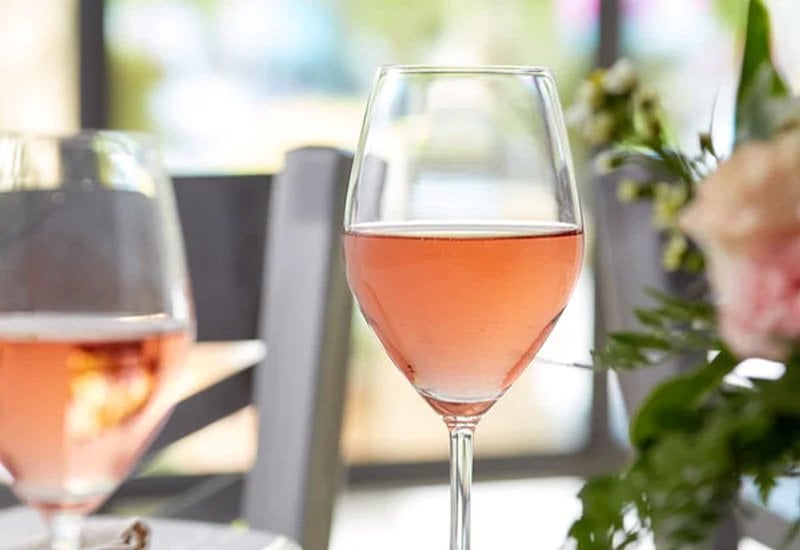
A delicious blush wine, Rose is super-popular among wine drinkers and investors alike.
What Is Rose Wine?
Rose wine is made from red wine grape varietals by macerating the grape juice with the grape skins for only a few hours. This limited contact with grape skin is what gives the wine light pink color.
Rose wine can be sweet, dry, and even sparkling.
While most Roses are meant to be drunk early, some exceptional sparkling Roses like Dom Perignon Rose can age for up to 30-40 years.
Rose Wine Characteristics And Food Pairings
- Color: Rose wine can range from blush pink to translucent red color.
- Tannin: Low tannins
- Acidity: Rose wine has moderate to high acidity.
- Taste: Dominant red fruit flavors with subtle floral and citrus notes
- Varietal: Usually made from a blend of red wine grapes like Sangiovese, Cabernet Sauvignon, Malbec, and Pinot Noir. But in New World regions, Pinot Noir, Zinfandel, Petite Sirah, Petit Verdot, and Merlot varietals are common as well.
- Food Pairing: Chicken, salmon, duck, lamb, veggie skewers, and soft cheese
- Serving Instruction: The ideal temperature to serve Rose wines is between 45–55°F(7-13°C).
Popular Rose Wines
The best rose wines are:
- 1996 Dom Perignon Rose Gold, Champagne, France (Price: $57,516)
- 1995 Louis Roederer Cristal Vinotheque Edition Brut Rose Millesime, Champagne, France (Price: $2,508)
4. Sparkling Wine (Characteristics, Food Pairings, Wine Recommendations)
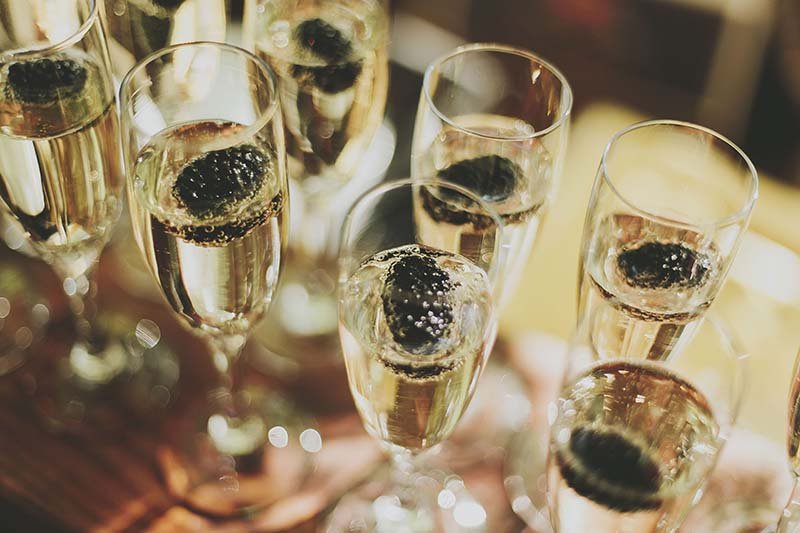
When it comes to celebrations, sparkling wine is another option you should look for!
What Is Sparkling Wine?
Sparkling wine is a fizzy drink with carbon dioxide bubbles that give it a shimmering look.
Sparkling wines are produced by fermenting the wine twice. They are produced from two main methods — Methode Traditionelle (or Methode Champenoise) and the Charmat method.
In the traditional method, the secondary fermentation takes place in the bottle, while in the Charmat method, the wine is fermented in pressurized tanks.
Sparkling Wine Characteristics And Food Pairings
Here are some common sparkling wines characteristics:
- Color: Can be red, white, or rose
- Tannin: Low tannin levels
- Acidity: Moderate to high acidity
- Taste: Since sparkling wines are produced from various grape varieties, the flavors vary quite a bit. Most sparkling wines have a distinct citric flavor to them.
- Varietal: Can be a varietal wine like Prosecco or a blend of different grape varieties (red and white grapes) like Champagne
- Food Pairing: Cream cheese, seafood, fruit desserts
- Serving Instruction: Serve sparkling wines chilled — at temperatures between 43-47°F (6-8°C)
Popular Sparkling Wines
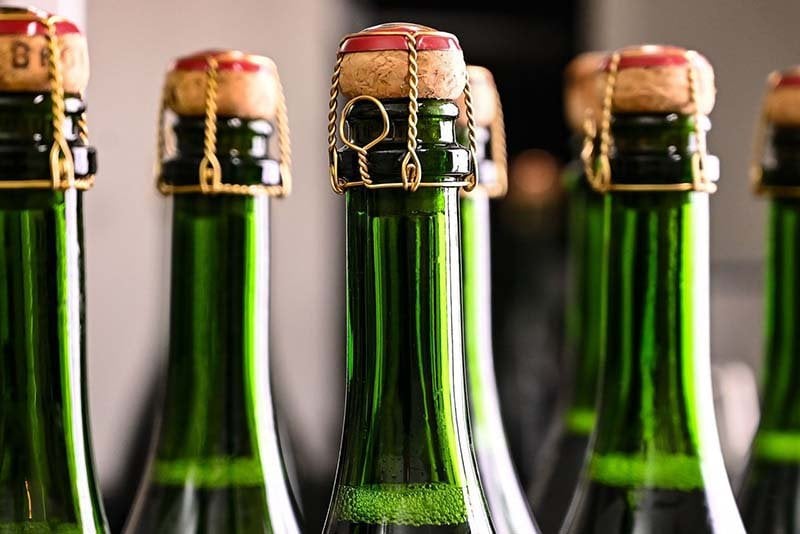
Sparkling wines are produced worldwide with unique styles, but Champagne is the most admired one.
1. Champagne
This French wine is produced in the Champagne wine region of France. It is made from the traditional ‘Methode Champenoise’ from a blend of Chardonnay, Pinot Noir, and Pinot Meunier grapes.
This cellar-worthy French wine can age for 5-20 years.
The top Champagnes to buy in 2024 are:
- 1983 Dom Perignon P3 Plenitude Brut, Champagne, France (Price: $7,428)
- Moët & Chandon Esprit du Siècle Brut, Champagne, France (Price: $11,300)
2. Other Sparkling Wines
Popular sparkling wines from other regions include:
- Italy: Prosecco, Franciacorta, and Lambrusco
- Spain: Cava (A semi-sweet to dry wine made from Methode Traditionelle)
- Germany: Sekt (a blend of French, Italian, and Spanish sparkling wines imported to Germany)
These popular wines are also produced in the US, England, Hungary, Romania, Australia, Canada, South Africa, and Chile.
5. Dessert Wine (Characteristics, Food Pairings, Wine Recommendations)

The last on this list is sweet wine, commonly called dessert wine.
What Is Dessert Wine?
A dessert wine is produced when the winemaker ferments the grape juice only partially, so the wine is left with some residual sugar. This residual sugar gives the wine a sweet flavor.
Sweet wine should be served in a compact, small-sized wine glass.
Dessert Wine Characteristics And Food Pairings
Here are some common characteristics of dessert wines.
- Color: A dessert wine can be red, rose, or white.
- Tannin: This sweet wine has moderate to low tannins.
- Acidity: More than 1% acidity to balance the sweet flavor
- Taste: In general, sweet white wines are more floral and nutty, while sweet red wines have strong fruit flavors.
- Varietal: Sweet wines are produced as both blends and varietals. Some popular sweet varietal wines are Moscato, White Zinfandel, and Riesling.
- Food Pairing: Apple pie, tiramisu, chocolate cake, and blue cheese
- Serving Instruction: Serve dessert wine at cool temperatures ranging between 41-47°F (5-8°C)
Popular Dessert Wines
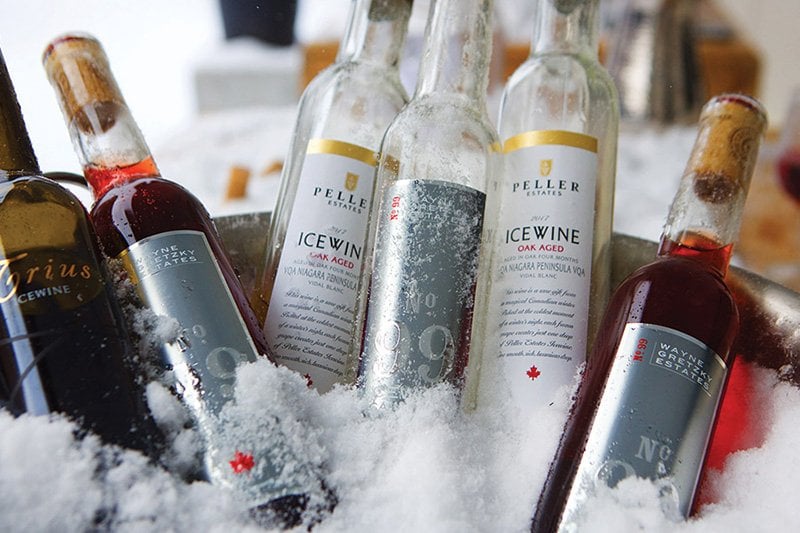
Ice wine and fortified wine are two very popular dessert wine styles.
1. Icewine
Icewine (Eiswein) is produced from partially frozen grapes with concentrated juice and naturally high residual sugar levels.
It has strong citric notes balanced by honey, stone fruit, and tropical fruit flavors.
The best ice wines can age comfortably for 20-30 years.
The top ice wines are:
- 1998 Egon Muller Scharzhofberger Riesling Eiswein, Mosel, Germany (Price: $4,526)
- 1983 Joh. Jos. Prum Wehlener Sonnenuhr Riesling Eiswein, Mosel, Germany (Price: $1,665)
2. Fortified Wine
Fortified wine is made by adding distilled spirits like brandy before the fermentation is completed - effectively stopping the fermentation process.
Some famous fortified wines are Madeira and Port from Portugal, Marsala from Italy, and Sherry wine from Spain.
While Marsala and Sherry are early-drinking wines, Port wines can age for 20-50 years.
Our best fortified wine recommendations are:
- 1875 D'Oliveiras Moscatel Reserva Vintage, Madeira, Portugal (Price: $1,530)
- W & J Graham’s ‘Ne Oublie' Tawny Port, Portugal (Price: $8,032)
Now, here’s something which we want to reveal too:
From Drinking to Investing: The Hidden Value Behind Fine Wine
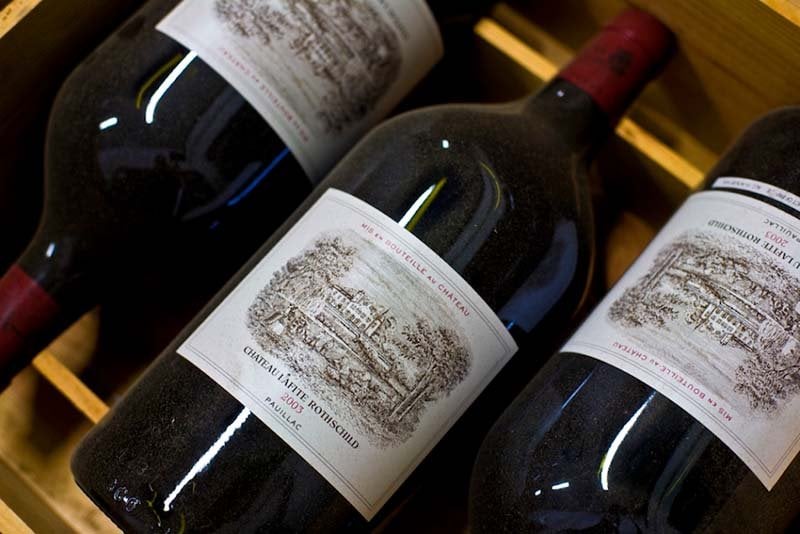
Now that you’ve explored the most popular types of wine — from bold reds to crisp whites — you might be surprised to learn that some of these bottles aren’t just great to drink.
In fact, certain wines, like vintage Bordeaux or premium Pinot Noir, have also become high-performing investment assets, offering returns that rival or even surpass the stock market.
So if you’re someone who not only enjoys drinking wine but also thinks long-term, there’s a whole other side of wine worth exploring: wine as a wealth-building asset.
Over the past 15 years, the fine wine industry has delivered 13.6% annual returns — much higher than mainstream investments. Wine has also outperformed the S&P 500 by 1000% in the past two decades.
While it's true that some wines are excellent for long-term investments, not every wine is worth cellaring. A Barbera d’Asti is perfect for your Sunday steak dinner, but it may not be an investment-worthy wine like a high-quality Cabernet Sauvignon or Pinot Noir from the world’s best winemakers.
So how do you get started if you’re curious about this side of wine?
A trusted wine investment company like Vinovest can help you buy and store the right wines that will potentially yield significant returns in the long run.
Invest in Authentic Fine Wine Through Vinovest
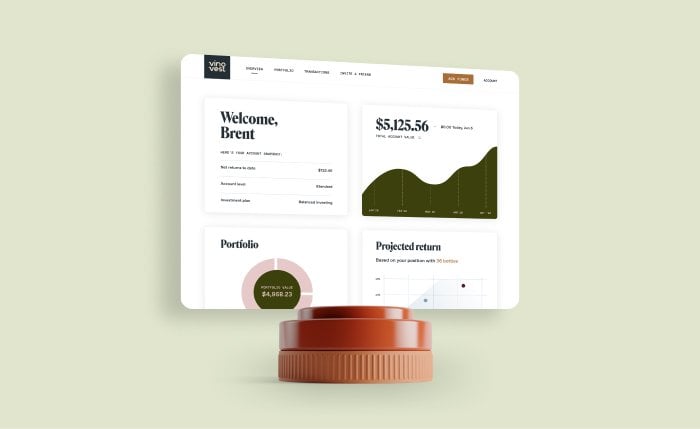
Vinovest is a leading online wine investment company that helps you buy authentic fine wines from Bordeaux, Napa Valley, Argentina, or anywhere else in the world.
Besides buying, Vinovest also helps you store your Chateau Lafite, Pomerol, and other authentic wines and sell them at the right time to earn maximum returns.
How Does It Work?
Here's how to start investing with Vinovest
- Sign up on Vinovest.
- Determine your risk appetite and investment preferences.
- Add funds to your account (minimum $1,000.)
- Add exotic Pinot Noir and other collectibles to your online wine investment portfolio or let us build a portfolio for you.
Benefits
Here are a few reasons to consider Vinovest as your wine investment partner:
- AI-Driven Platform: Vinovest’s AI-driven online platform makes buying and selling wines super-easy - with just a few clicks of your mouse!
- Best Prices: Vinovest buys wine directly from wineries, global wine auctions, and wine exchanges. So you get your Bordeaux and other authentic wines at wholesale prices.
- Access To A Deep Wine Network: Investing with Vinovest gives you access to a deep network of rare wineries, limited edition wines, and upcoming vineyards, even in lesser-known regions.
- Perfect Storage: Vinovest stores your sweet wine and other collectibles in bonded warehouses with optimal temperature, the right light, humidity, and vibration levels.
- Provenance And Authenticity: Vinovest’s wine experts ensure the provenance of every wine bottle you buy through them. So, you won’t have to worry about a counterfeit bottle of Bordeaux ever again!
- Full-Coverage Insurance: Each bottle of Pinot Noir and other fine wines you buy through Vinovest comes with a comprehensive insurance policy covering breakage, loss, and theft.
- Low Overall Cost: Vinovest charges a minimal fee of 2.5% (1.9% for a portfolio of $50,000). This fee includes buying, storage, authentication, selling, full-coverage insurance, and portfolio management. Also, since your wines are stored in bonded warehouses, you don’t have to pay any VAT or excise duty.
- Ownership: You have complete ownership of every bottle you buy through Vinovest.
Discover, Savor, and Even Invest in Wine (Because, Why Not?)
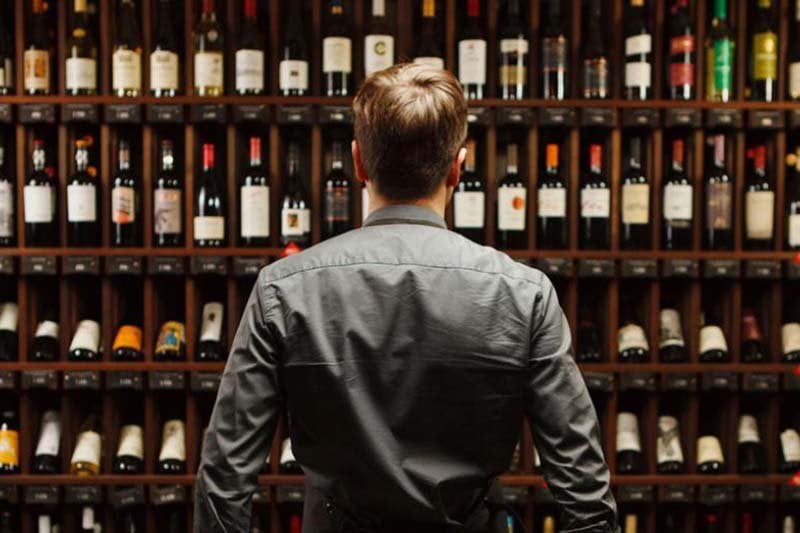
The stunning diversity of wines we’ve explored offers a rich tapestry of flavors, aromas, and styles to suit every palate and occasion.
Beyond their sensory pleasures, many of these wines also represent exciting investment opportunities, with some bottles appreciating significantly in value over time.
Ready to take your appreciation for fine wine to the next level?
Sign up with Vinovest to discover more about fine wine investing and start your investment journey today.
